Is Dengue Fever Coming to a Neighborhood Near You? Or, A Tale of Two Mosquitoes
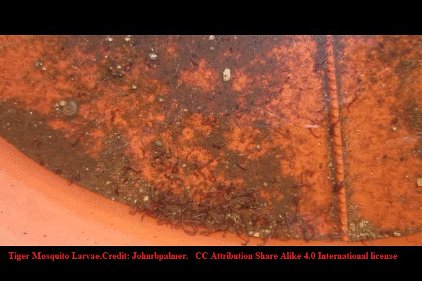
In 2018 WHO reported that 3.9 billion people were at risk of contracting dengue fever. There is currently no consistently reliable vaccine and the disease is rapidly spreading into new areas of the world. As a matter of fact, dengue is probably coming to a neighborhood near you.
Where does the story of dengue begin? Sometimes it begins where the lives of many people end: in the cemetery.
There are three St. Louis Cemeteries in New Orleans. The crypts in the cemetery are above ground because the water table is so high. Many notable personalities are interred in St. Louis #1. Two of these were famous architects, Benjamin Henry Latrobe and his son Henry Sellon Boneval LaTrobe. Both succumbed to yellow fever while working on projects in the city.
The history of mosquito-borne fevers in New Orleans is tragic, and legendary. Epidemic yellow fever and dengue visited the city in waves. In 1853, yellow fever took 8,000 lives. And between 1870 and 1873, 40,000 cases of dengue fever were reported. All the while, no one suspected that the diseases traveled stealthily on the wings of a tiny insect.
Illness was whimsical. In a single home, some would be spared, and some taken. The rich and poor alike would fall, without apparent connection. And when death came, survivors would often inter the fallen in one of the cemeteries located in a nearby neighborhood. There, memorial planters would be placed in front of the crypts. The rains would come and water would pool in the planters. Here, the angels of death, mosquitoes, would find congenial breeding grounds. The larvae would flourish and adult mosquitoes emerge to fly away to the homes where their forebears had claimed lives. The new generation would feed, infect new victims. Some of these victims would end up in the very cemeteries where the mosquitoes had found life.
In 1900 it was recognized that mosquitoes could carry yellow fever. Arriving at this discovery was a very costly process. The search for yellow fever's source demanded the sacrifice of heroes, volunteers who gave their lives.
One of those volunteers was Clara Louise Maass, a young nurse who agreed to be bitten by a contaminated mosquito--not once, but twice. The second time was to test the theory that a mild case of fever would confer immunity. It didn't. She died, at the age of twenty-five. Her death marked the end of human experiments with yellow fever.
Once it was understood that mosquitoes transmitted disease, eradication of the insect became the immediate goal. Sanitation programs were undertaken to eliminate breeding grounds where mosquitoes flourished. The picture below shows a work crew in an unidentified U.S. state. The men are draining a pool of standing water.

In 1937, a vaccine against yellow fever was developed by Max Theiler. While the disease still raged in unimmunized populations, science now had two tools to fight the yellow fever scourge: vaccination, and eradication of the Aedes aegypti mosquito, which had been identified as its carrier. As a matter of fact, this insect was commonly referred to as the "yellow fever" mosquito.
Dengue Fever: A Disease with Wider Reach than Yellow Fever, and no Consistently Reliable Vaccine
Since 1903 it had been recognized that the yellow fever mosquito, Aedes aegypti, could also transmit dengue fever. Very little was understood about this virus, but in 1944, during a dengue pandemic, Albert Sabin (of polio fame) isolated the virus.. Eventually, researchers learned that there were four types of dengue virus, and that another species of Aedes mosquito could transmit it. This mosquito, Aedes albopictus  , was commonly known as the Asian tiger mosquito. In 1944, it had limited global range.
, was commonly known as the Asian tiger mosquito. In 1944, it had limited global range.
In 2016, on a fine spring day, it was discovered that the mosquito Aedes albopictus (eggs) had survived the winter in a German field. This sent up alarm signals, because it meant that not only could dengue fever be imported by travelers, but it could be sustained and grow independently in Germany.
A 2013 article in Pathogens and Global Health describes why Aedes albopictus has become such a widely dispersed global threat. The mosquito has "physiological and ecological plasticity" 2 What this means is, the mosquito wins the trifecta of survivability: Its eggs can over-winter in cool, dry environments; the adult can breed in natural environments and man-made containers; and the mature mosquito happily feeds on a variety of hosts, not just humans.
When the Tires Hit the Road, Mosquitoes Hitch a Ride
Aedes aegypti and Aedes albopictus eggs show variability in resistance to changes in humidity and temperature. The key to albopictus durability is its resistance to cold. This allows the mosquito to hitch a ride on a variety of conveyances. Both  and
and  can pass the dengue virus on to their eggs.
can pass the dengue virus on to their eggs.
How Far Can the Mosquitoes Fly?
Not far enough to explain their invasion of multiple continents. A 2002 report out of Brazil explains that both Ae.aegypti and Ae.albopictus "females can fly at least 800 m in 6 days"3.
While that range is impressive, it doesn't explain transcontinental expansion. We have ourselves to thank for that. Two proven methods for transporting mosquitoes are used tires and people traveling in automobiles. In a report labeled, "Direct Evidence of Adult Aedes albopictus Dispersal by Car", the authors describe how vacationers in Spain carry mosquito eggs north. Other types of freight, especially plants, have been implicated in the mosquitoes' global expansion.
If you look at the two maps below and compare the estimated distribution of Ae.albopictus (tiger) in the U S, for example, you'll get an idea of how the reach of this mosquito is expanding. The global map is for year 2015. The US map is for year 2017.
A Tale of Two Mosquitoes
These 
 are both carriers of deadly diseases and both have shown a troubling ability to persist in a variety of environments, despite vigorous efforts at eradication. Both mosquitoes are enzootic vectors-- they transmit diseases from animals to humans. The two mosquito species co-exist and are also competitive. In some cases the tiger mosquito has displaced its Aedes relative.
are both carriers of deadly diseases and both have shown a troubling ability to persist in a variety of environments, despite vigorous efforts at eradication. Both mosquitoes are enzootic vectors-- they transmit diseases from animals to humans. The two mosquito species co-exist and are also competitive. In some cases the tiger mosquito has displaced its Aedes relative.
It Doesn't Pay to Sleep Around, at Least if You're Aedes aegypti 
A small percentage of Ae.aegypti  and Ae.albopictus
and Ae.albopictus  mate with each other. There are no hybrid offspring from these unions. However, the conjugal event renders the female Ae.aegypti
mate with each other. There are no hybrid offspring from these unions. However, the conjugal event renders the female Ae.aegypti  sterile. This ends up creating an overall fertility deficit in Ae.aegypti. Researchers believe this may have a sort of snowball effect and at least partly explain why the tiger mosquito is able to displace the more established Ae.aegypti species. A YouTube video produced by Yale explains how this might happen.
sterile. This ends up creating an overall fertility deficit in Ae.aegypti. Researchers believe this may have a sort of snowball effect and at least partly explain why the tiger mosquito is able to displace the more established Ae.aegypti species. A YouTube video produced by Yale explains how this might happen.
Particular Challenges of Dengue Fever
The greatest challenge of dengue is that, to date, there is no vaccine endorsed by WHO for efficacy and safety. The difficulty in developing a vaccine seems to be related to the fact that there are four subtypes of the virus. It's hard to design a vaccine that addresses all four subtypes (developers of the polio vaccine faced a similar challenge).
Perfect Breeding Ground for Mosquitoes
How Dangerous Is It?
There's dengue, and severe dengue. According to WHO, for most people dengue is a flu-like illness and with proper medical care has an excellent survival rate. Severe dengue, on the other hand, is a life-threatening condition, especially for children. It has hemorrhagic features and patients must receive prompt and skilled medical care. Without that, mortality can be as high as 20%.
Treatment for severe dengue consists mostly of fluid replacement and is best handled in facilities experienced with this disease.
A curious, and critical aspect of dengue is that surviving a bout with one subtype of the virus makes one susceptible to the severe, hemorrhagic form if another subtype is contracted. People should be aware of this increased risk if they have already had dengue.
This video explains in great detail why the second infection is so dangerous.
Are You Scared Yet?
I am. There is something we can all do, and I am going to do. Every single container or receptacle that may hold water will be kept dry on my property. That includes hard-to reach gutters. And as I walk around my community, if I see an empty container with water, I will drain that water.
Mosquitoes may have a place in the ecology, but not in my home ecology.
The list of diseases transmitted by these mosquitoes is long. Fact Sheets for each may be found here:
, and here:


Footnotes
1 Dengue Fever – A Dangerous Foe, JIACM 2004
http://medind.nic.in/jac/t04/i3/jact04i3p247.pdf
2 The role of environmental variables on Aedes albopictus biology and chikungunya epidemiology
https://www.ncbi.nlm.nih.gov/pmc/articles/PMC4001452
3 Dispersal of Aedes aegypti and Aedes albopictus (Diptera: Culicidae) in an Urban Endemic Dengue Area in the State of Rio de Janeiro, Brazil
http://www.scielo.br/scielo.php?script=sci_arttext&pid=S0074-02762003000200005

Some Sources Used in Writing This Article
The role of environmental variables on Aedes albopictus biology and chikungunya epidemiology*
https://www.ncbi.nlm.nih.gov/pmc/articles/PMC4001452
Dispersal of Aedes aegypti and Aedes albopictus (Diptera: Culicidae) in an Urban Endemic Dengue Area in the State of Rio de Janeiro, Brazil
http://www.scielo.br/scielo.php?script=sci_arttext&pid=S0074-02762003000200005
Dengue Fever – A Dangerous Foe, JIACM 2004
http://medind.nic.in/jac/t04/i3/jact04i3p247.pdf
Aeses albopictus - Factsheet for experts
https://ecdc.europa.eu/en/disease-vectors/facts/mosquito-factsheets/aedes-albopictus
Aedes aegypti - Factsheet for experts
https://ecdc.europa.eu/en/disease-vectors/facts/mosquito-factsheets/aedes-aegypti
WHO: Dengue and severe dengue
https://www.who.int/news-room/fact-sheets/detail/dengue-and-severe-dengue
Science History Institute: Jonas Salk and Albert Bruce Sabin
https://www.sciencehistory.org/historical-profile/jonas-salk-and-albert-bruce-sabin
WHO: Immun izations, Vaccines and Biologics
https://www.who.int/immunization/research/development/dengue_q_and_a/en/
Ecology and Evolution of Invasive Mosquito Disease Vectors (YouTube)
youtube.com/watch?v=PAkLEfbBa-c
American Journal or Tropical Medicine and Hygiene: Competitive Reduction by Satyrization? Evidence for Interspecific Mating in Nature and Asymmetric Reproductive Competition between Invasive Mosquito Vectors
https://www.ncbi.nlm.nih.gov/pmc/articles/PMC3144823/
Potential of Aedes aegypti and Aedes albopictus populations in the Central African Republic to transmit enzootic chikungunya virus strains
https://parasitesandvectors.biomedcentral.com/articles/10.1186/s13071-017-2101-0
Estimated potential range of Aedes aegypti and Aedes albopictus in the United States, 2017*
https://www.cdc.gov/zika/vector/range.html
The global distribution of the arbovirus vectors Aedes aegypti and Ae. albopictus
https://elifesciences.org/articles/08347
Scientific Reports: Direct Evidence of Adult Aedes albopictus Dispersal by Car
https://www.nature.com/articles/s41598-017-12652-5
Journl of the American Mosquito Control Association: Aedes Albopictus and the World Trade in Used Tires, 1988-1995: The Shape of Things to Come.
https://pdfs.semanticscholar.org/3341/3183570c8f2fe7de71b399492e1f782474c2.pdf
Dengue Virus Net.com
http://www.denguevirusnet.com/transmission.html
Centers for Disease Control PHIL
https://phil.cdc.gov/Details.aspx?pid=1867
Parasitology Research: Successful overwintering of Aedes albopictus in Germany
https://link.springer.com/article/10.1007/s00436-016-5078-2
The American Journal of Tropical Medicine and Hygiene: The History of Dengue Outbreaks in the Americas
https://www.ncbi.nlm.nih.gov/pmc/articles/PMC3516305/#R57
Journal of Experimental Medicine:Yellow fever and Max Theiler: the only Nobel Prize for a virus vaccine
https://www.ncbi.nlm.nih.gov/pmc/articles/PMC2118520/
American Association for the History of Nursing: Clara Louise Maass 1876-1901
https://www.aahn.org/maass
CDC PHIL
https://phil.cdc.gov/Details.aspx?pid=9179
The Times-Picayune:1853: Terrifying yellow fever epidemic hits New Orleans
https://www.nola.com/175years/index.ssf/2011/08/1853_terrifying_yellow_fever_e.html
Journal of Tropical Diseases: The History of Dengue Outbreaks in the Americas
https://www.ncbi.nlm.nih.gov/pmc/articles/PMC3516305/
AOC: Benjamin Henry Latrobe
https://www.aoc.gov/architect-of-the-capitol/benjamin-henry-latrobe
Experience New Orleans: Cities of the Dead
http://www.experienceneworleans.com/deadcity.htm

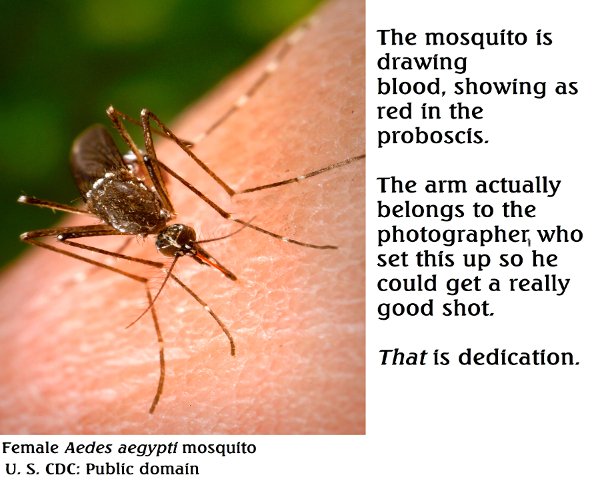

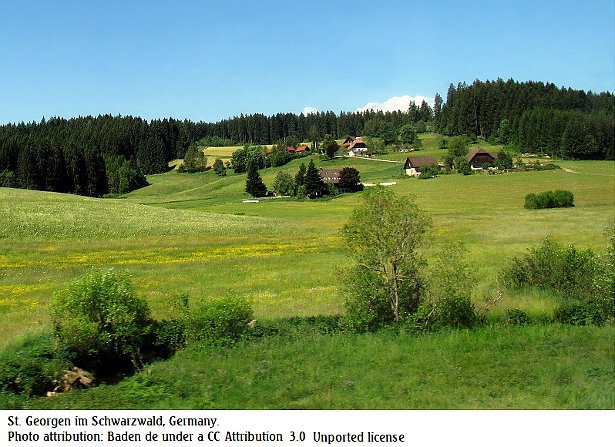
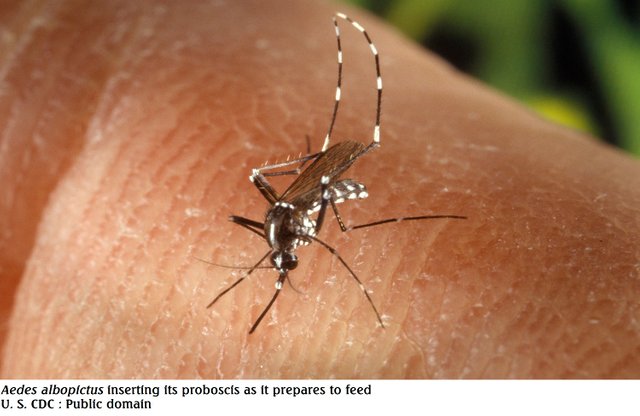
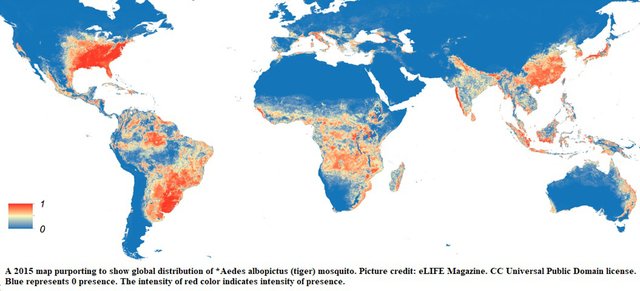
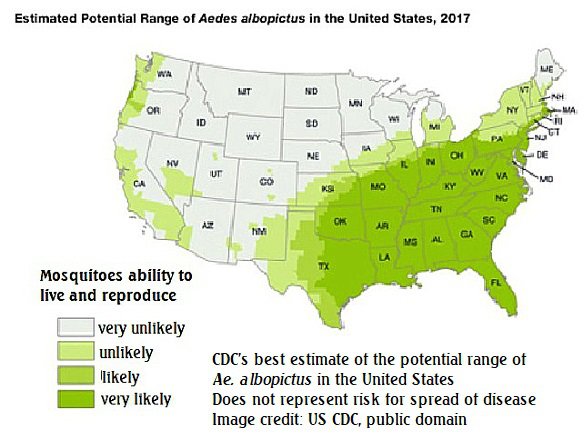

While reading articles like this I cherish the -20 degrees we're having at the moment. But now I have another reason to be scared in the summer XD And those little bastards just love me -.-
And I was never aware that 130 m per day is a fast paste. Sounds like so little progress, 30 km per year.
They love me too! If there's one in the house, everyone else is safe because the mosquito makes a b-line for me :)
Priceless... :D
Mosquitos impeded in the text are also very nice.
And the text itself was very good
Thank you! I worked very hard...it's like a mini college course. But, as you know, I love history, and science.
Your appreciation really means a lot.
This is scary. There are many invasive plants and dangerous insects that get accidentally imported. The nurse, Clara Louise Maass...what was she thinking? At least her death saved the lives of many other would-be volunteers. Awesome post @agmoore and I love the special touch of the mosquiotoes flying around, even if it did make me swat at my leags and arms a few times. LOL!
Thank you @whatisnew. I'm sure you see a few creepy crawlies on your photo expeditions. Clara Louis Maass--I've known about her for a few years. From time to time I try to let others know about her heroism. Twenty-five!
If I could have managed it, those mosquitoes would have been moving. Trying to teach myself how to make a GIF :)
It's a lot of fun writing for Steemit. When people enjoy my posts, that's a double benefit.
Yes, I sure have seen some creepy insects and I am saving the best ones for later on.
OMG! Moving mosquitoes would be awesome. I can appreciate all of the time and effort you put in your posts which make them so valuable and enjoyable. : )
I'm really impressed by the way you managed to pour this topic into a narrative like post. Not sure if that was intentional but it really reads like a book!
If you think mosquito's are annoying, try hiking in Scotland for a few days. If you stand still for a little to long you will be surrounded by midges. Similar to mosquito's but waayyy smaller and with the same apparent biting force... But 'luckily' they don't spread life threatening diseases like dengue or yellow fever.
Nice work!
Midges! Now you've got me curious. They don't spread disease? Ha Ha, just making you nervous.
Interesting that you think the post reads like a book. For a couple of years I was kind of addicted to book writing--mostly for students. My first ones were crude. Then I got the knack and was able to put them together more competently. Since I started posting on Steemit my book writing has fallen away, but now and then a book sells. Last month, one of my best sold 10 copies!
If I don't run out of time (on this earth!) I will get back to book writing. It's a lot of fun, though I don't get to meet people like @samve when I write a book :)
Thank you for your kind comments.
Hah! Luckily I don't live anywhere near to those critters. I wouldn't last a month with all the invisible buzzes and pinches.
Well that explains a lot! I think it's a nice mixture of science and story telling. What types of books did you used to write?
Anything that interested me. Sort of like here. My most recent (never sold a copy, but I loved it) was about Chinese literati art. One on Jonas Salk, for middle school kids. Self publishing makes it easy. If you ever want to publish a book, let me know...I'm good at it now :)
Than the chance of meeting would indeed be rather small 😄 Good to know in case I would ever want such a project!
Lovely writing here as well! I kinda see a new style developing. Literary. But journalistic too. Hemingwayan in the brevity of its to-the-point sentences.
Love the mosquitoes inserted in the text, too!
Sad subject matter, though :( Is there no hope? Other than mating/hybridizing them? What eats the most mosquitoes? Bats? Do we need more bats? Please can we get some more bats! Or mosquito-zapping lasers, perhaps?
Hi there :)
Thanks for the kudos on my writing style. I think my true self is peeking through. I'm sort of a hybrid, creative writer/history buff/science enthusiast. It's safer to write about objective stuff, like science, than to put myself out there with subjective material. But the separate inclinations bleed into each other, don't they?
As for those dang mosquitoes: releasing sterile males into the environment is one technique. Of course, we never know what sort of ripple effect that sort of profound intervention in nature will have.
Waiting for your next blog....speaking of which, I believe your previous blogs may bleed into my next one :)
Oh, someone is preparing a sex differences post?! My next one has the provisional heading 'Cuming of Age: the Boys who Drink Semen to Become Men'. I challenge you to beat that title 😄
I would never try to beat your post, especially that title :) But I do think you'll see the relevance of my next topic--if I ever get the blog out. First I have to understand what I'm talking about:)
This post has been voted on by the SteemSTEM curation team and voting trail in collaboration with @utopian-io and @curie.
If you appreciate the work we are doing then consider voting all three projects for witness by selecting stem.witness, utopian-io and curie!
For additional information please join us on the SteemSTEM discord and to get to know the rest of the community!
A double joy for me. The actual pleasure of researching and writing the blog, and then endorsement by this community. Thank you very much!
Thank you utopian-io and @curie. Have voted SteemSTEM, Curie and utopian-io as witnesses.
On behalf of the SteemSTEM team, thank you.
Great article, thank you for taking the time to put it together 😊
Thank you! And thanks for taking the time to read it :)
Of course. Very interesting read!
Congratulations @agmoore! You have completed the following achievement on the Steem blockchain and have been rewarded with new badge(s) :
Click here to view your Board
If you no longer want to receive notifications, reply to this comment with the word
STOPTo support your work, I also upvoted your post!
While I was living in Sri Lanka I always feared contracting dengue. One of my cousins had it and it was terrible. At one point we thought we lost him.
My daughter and granddaughter are going to Curacao in a couple of months. According to IAMAT "There is ongoing risk of Dengue in ... Curaçao. Risk is present year-round and throughout rural and urban areas. I wish she wasn't going. I'm all for natural remedies, but she has to pile the DEET on this time.
Safe travels to both of them!
Thank you! 😇